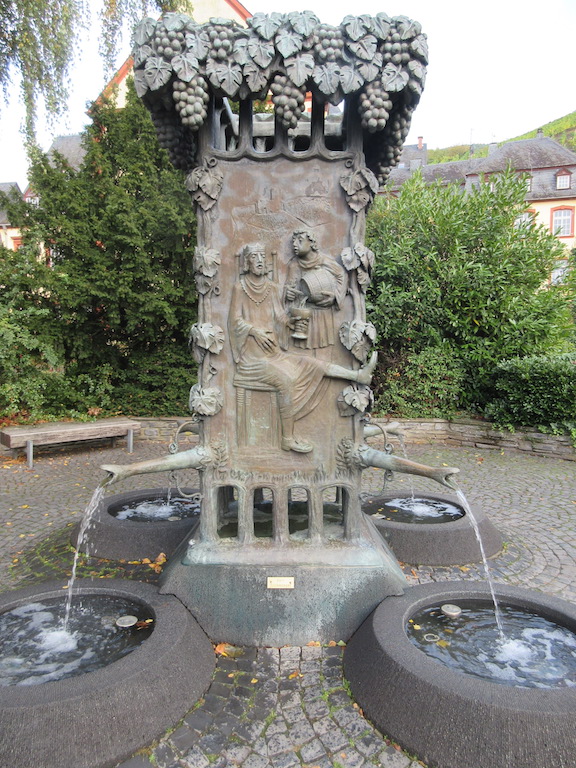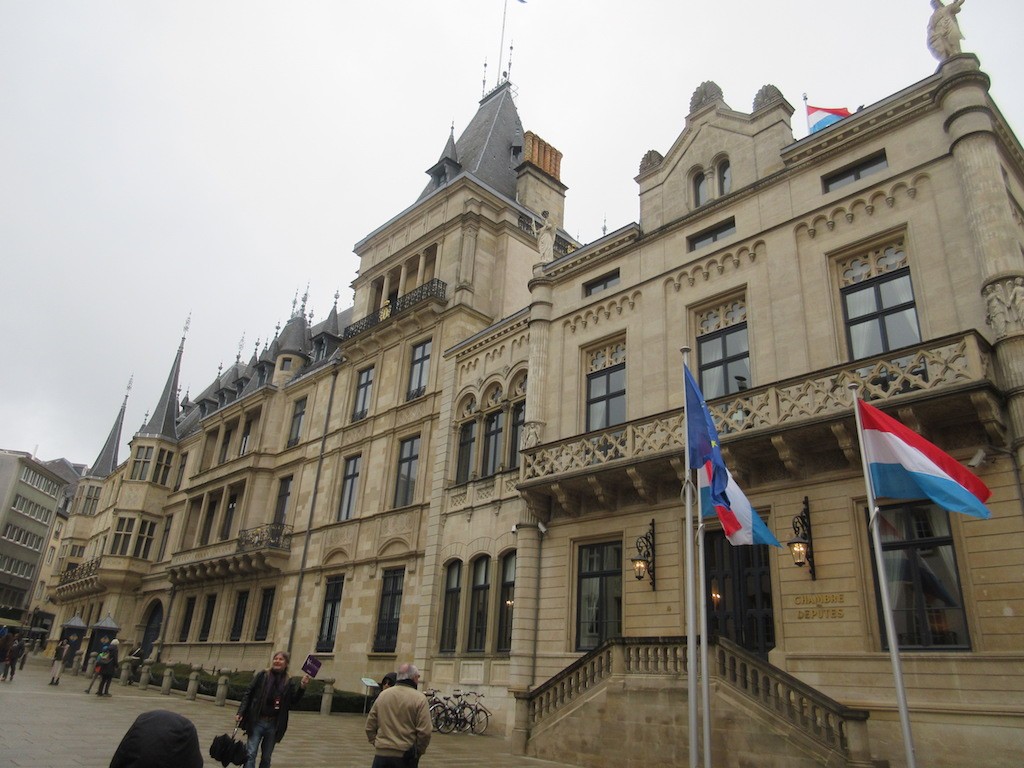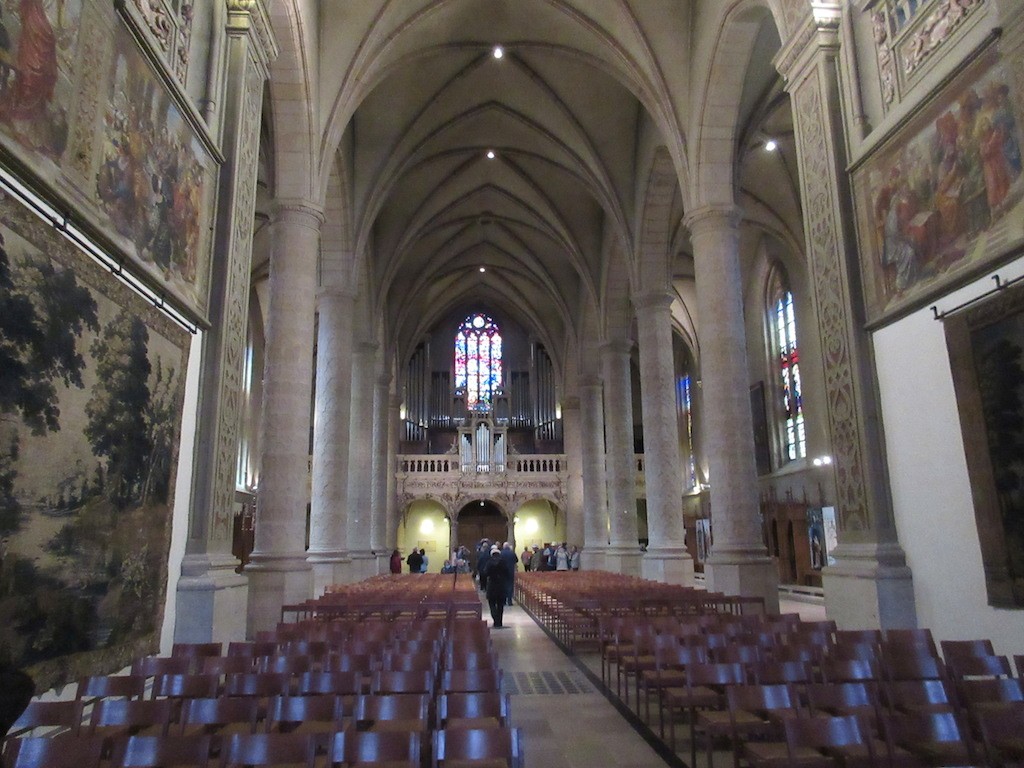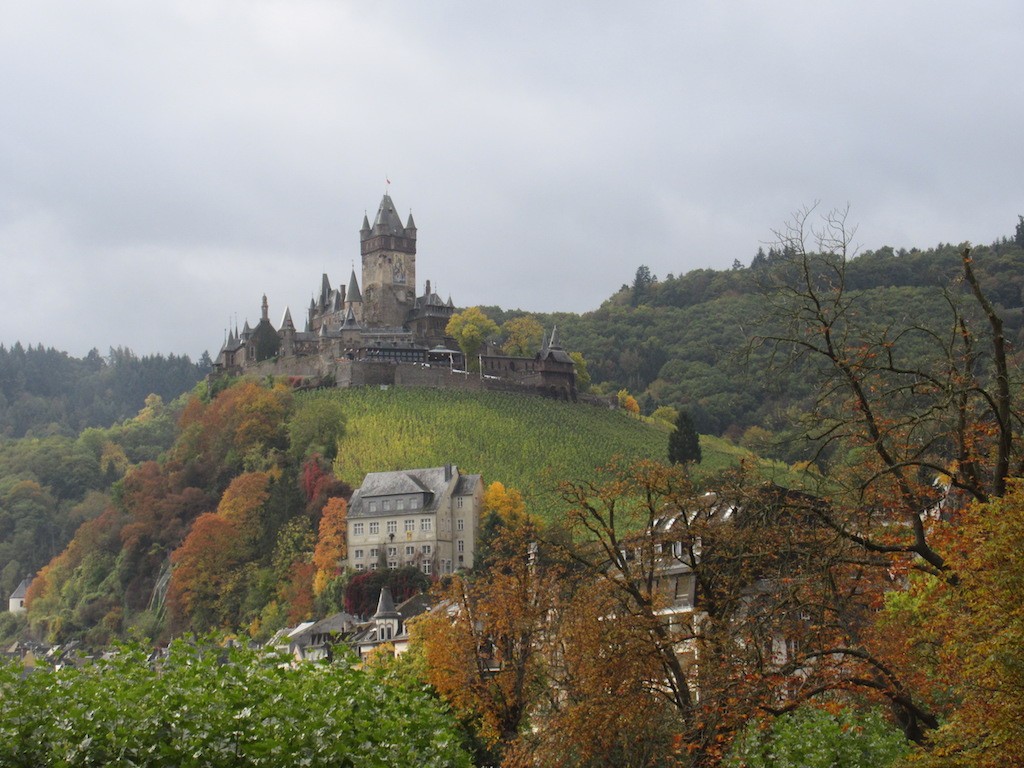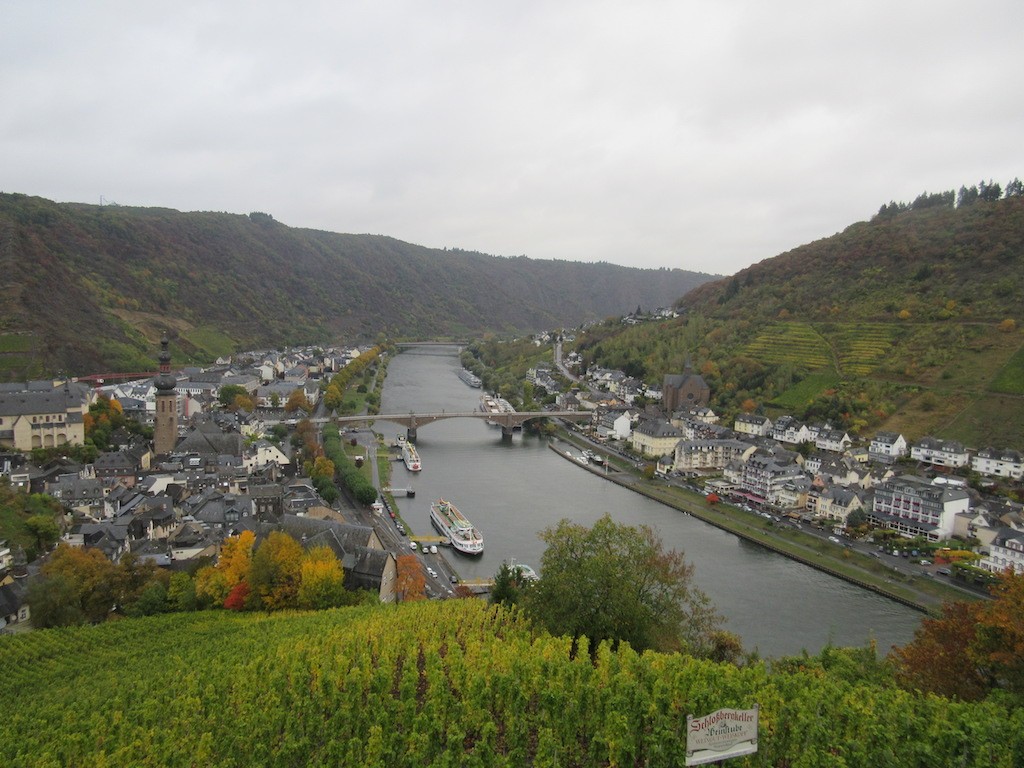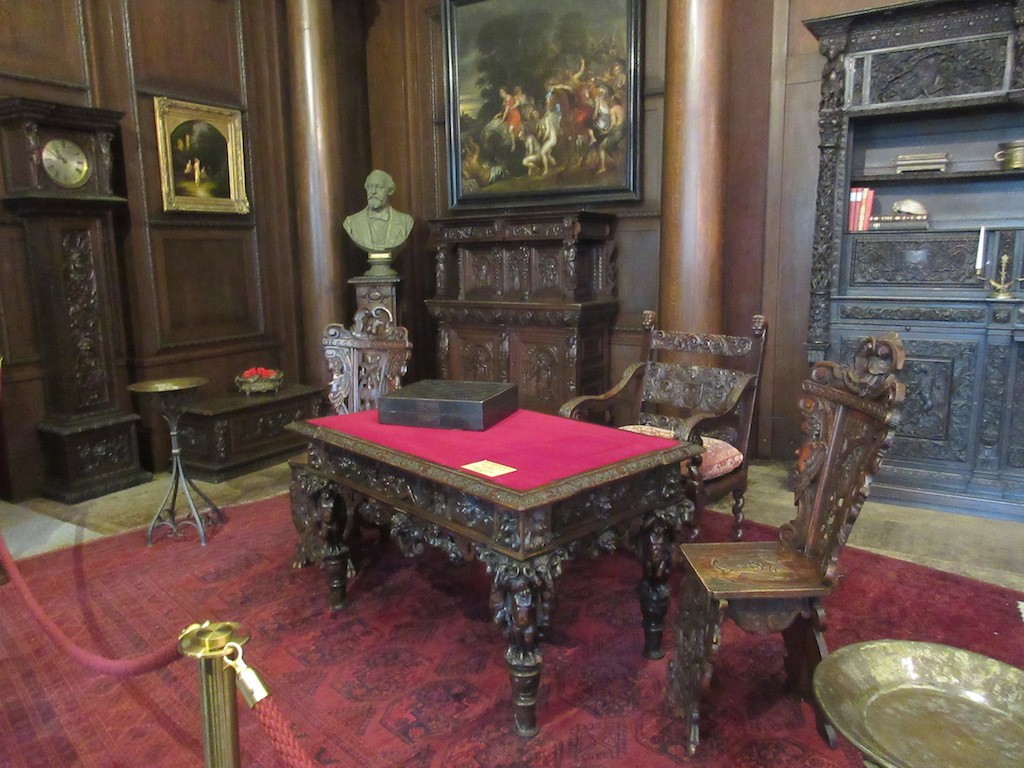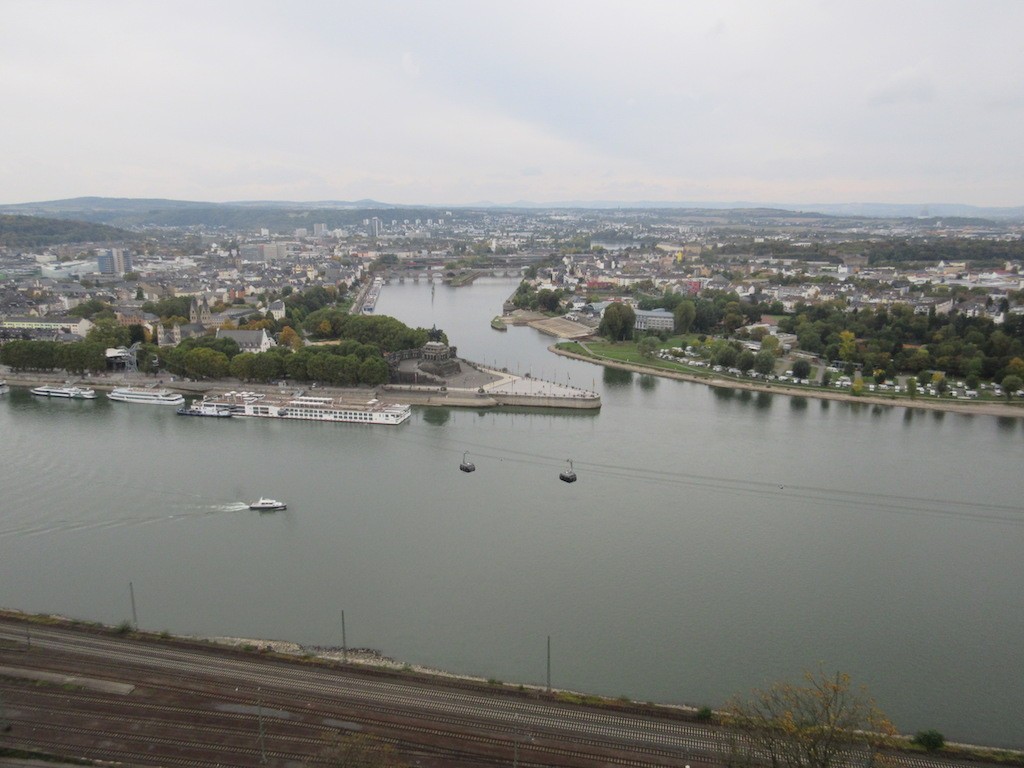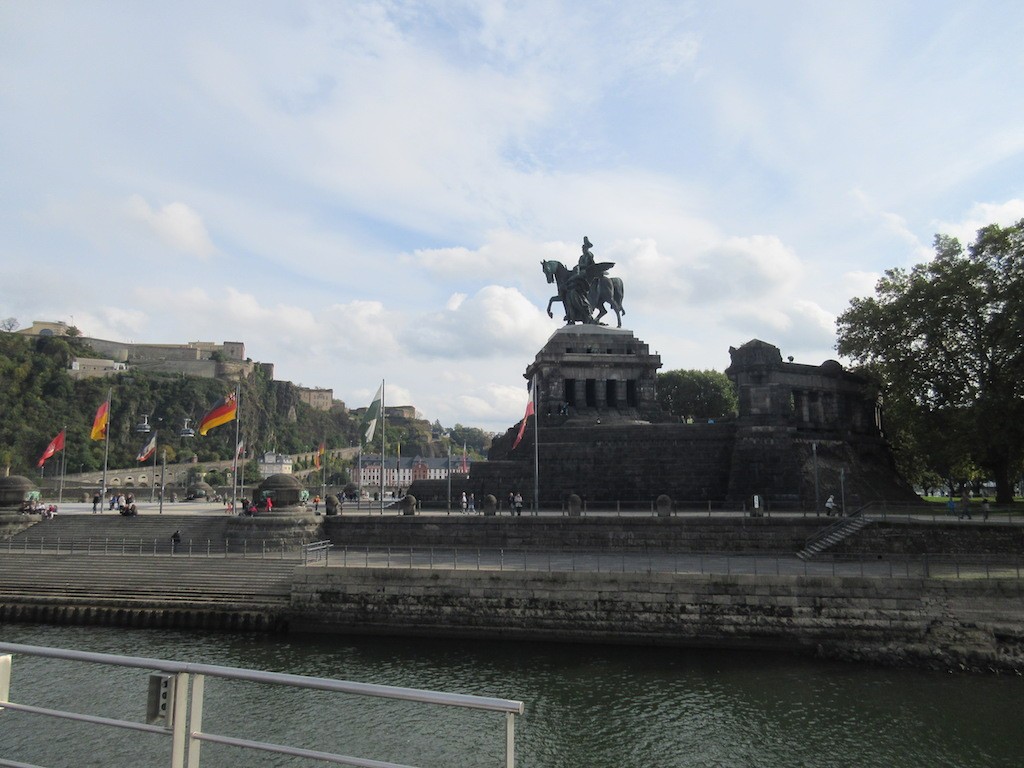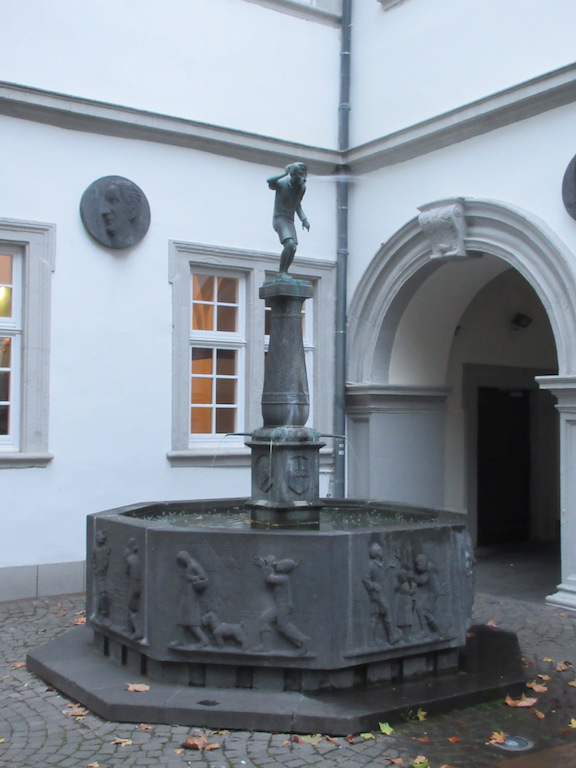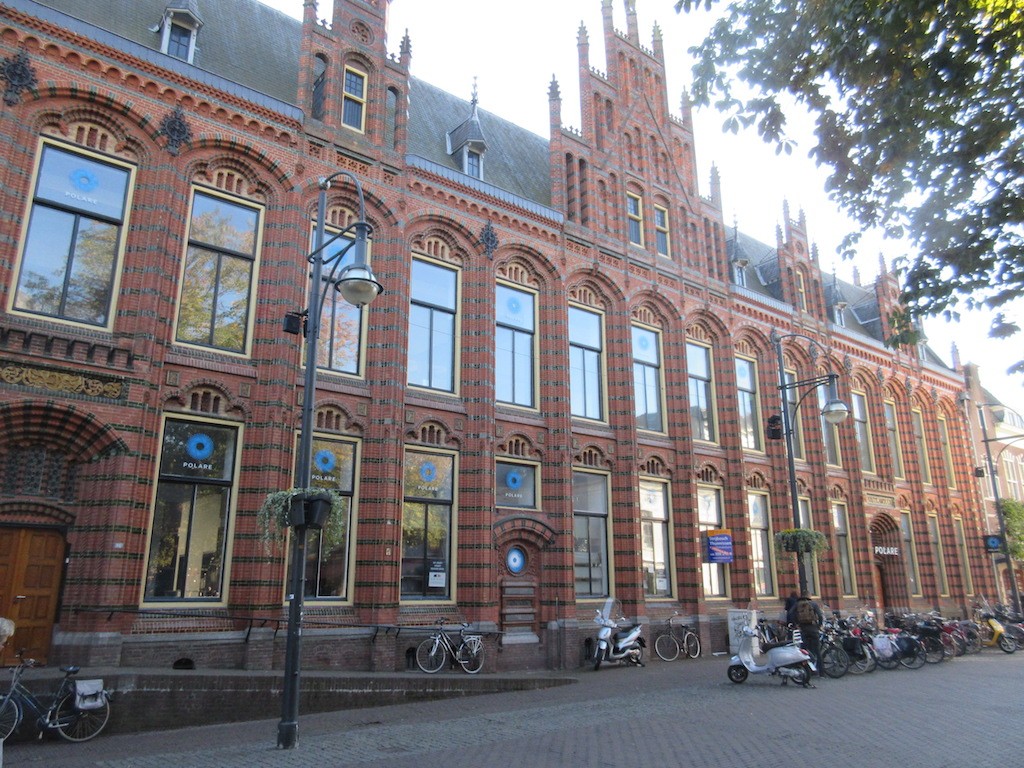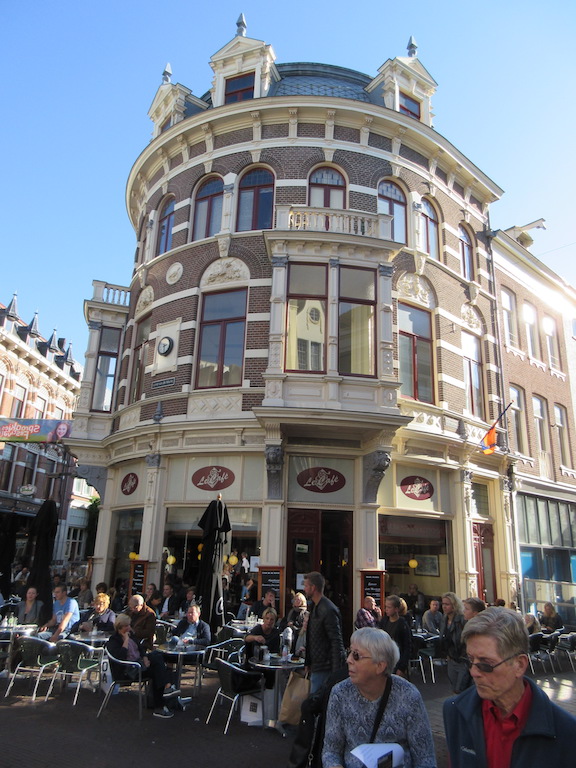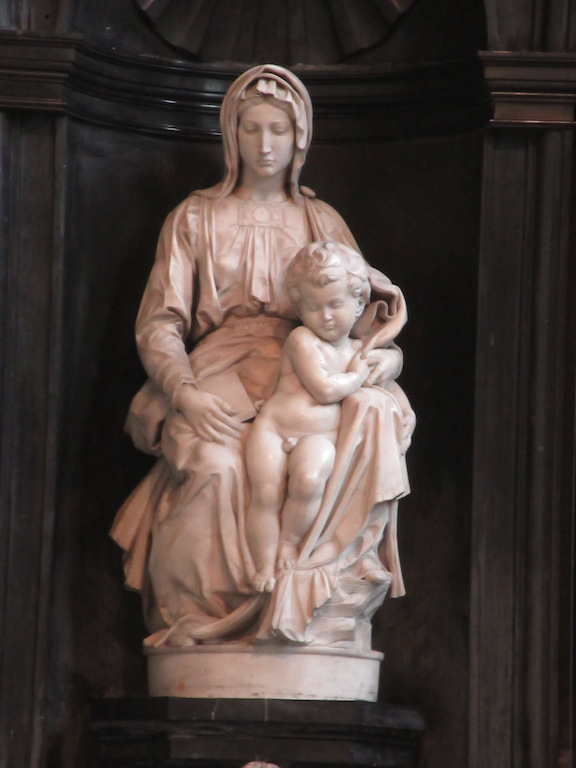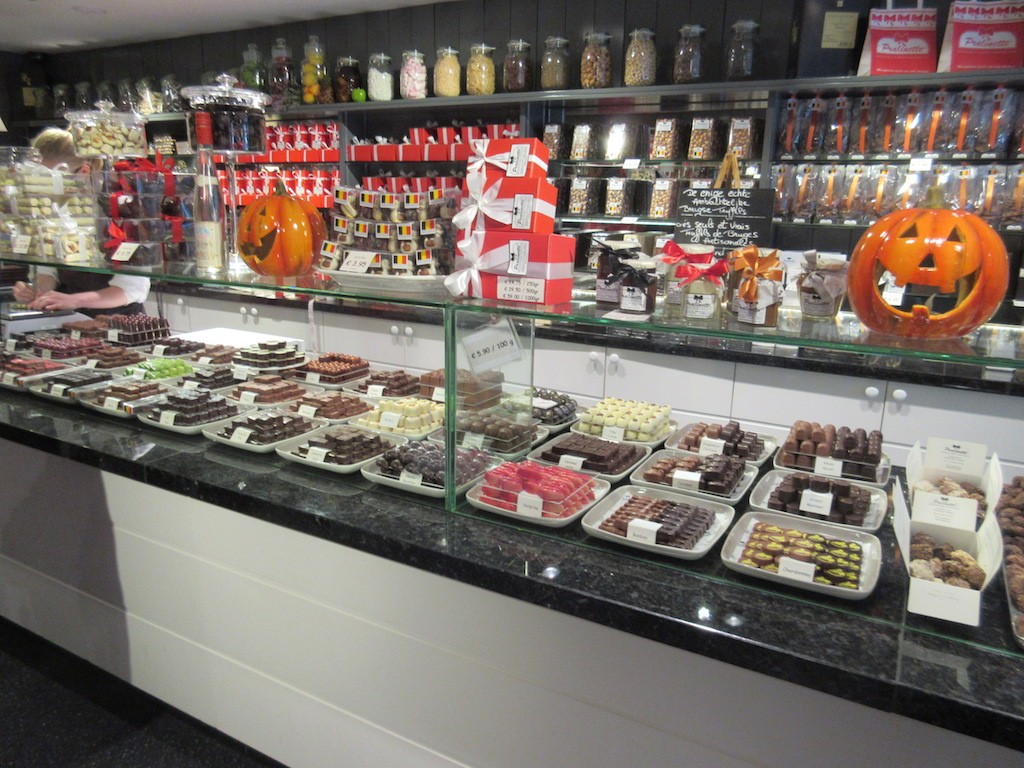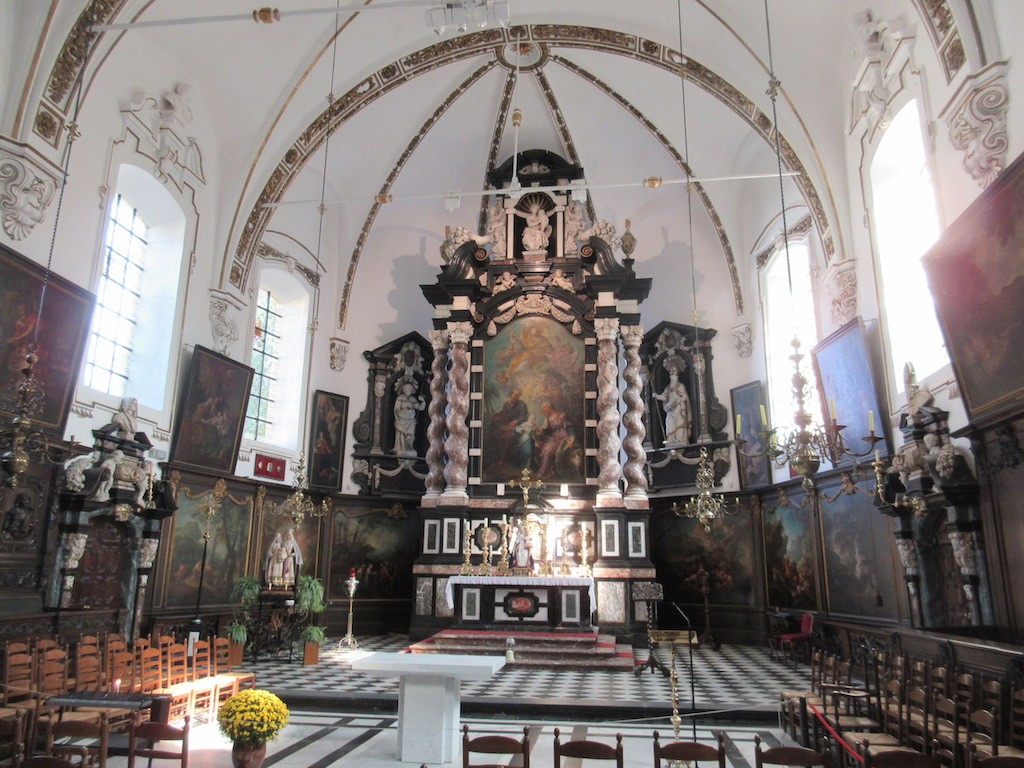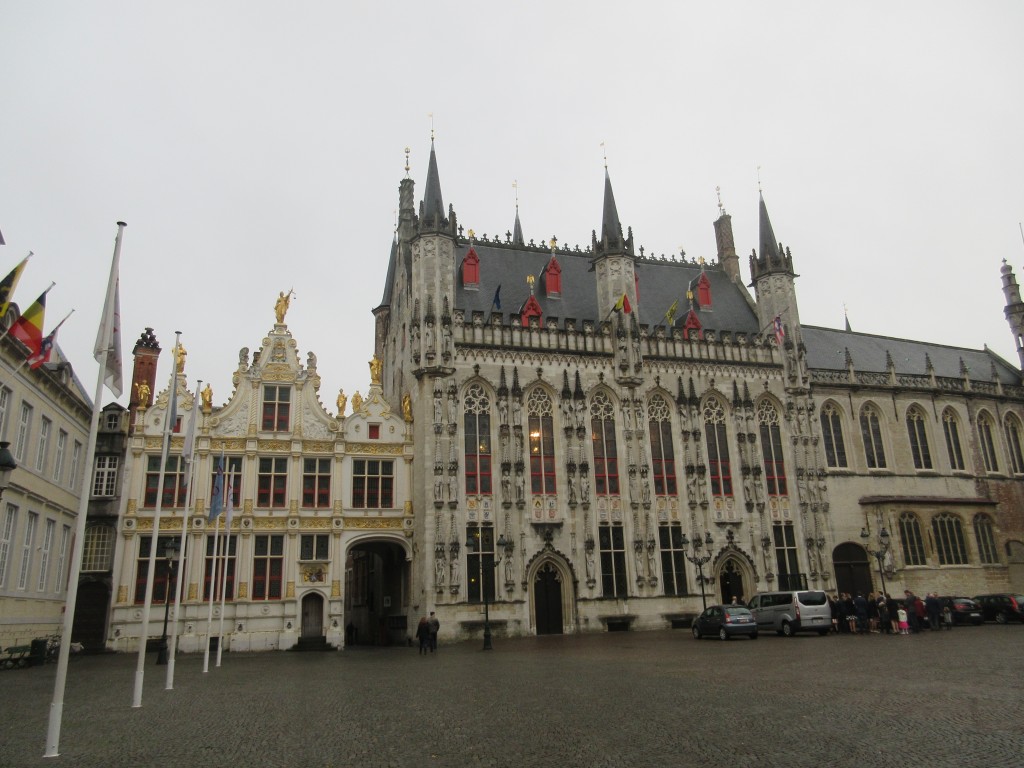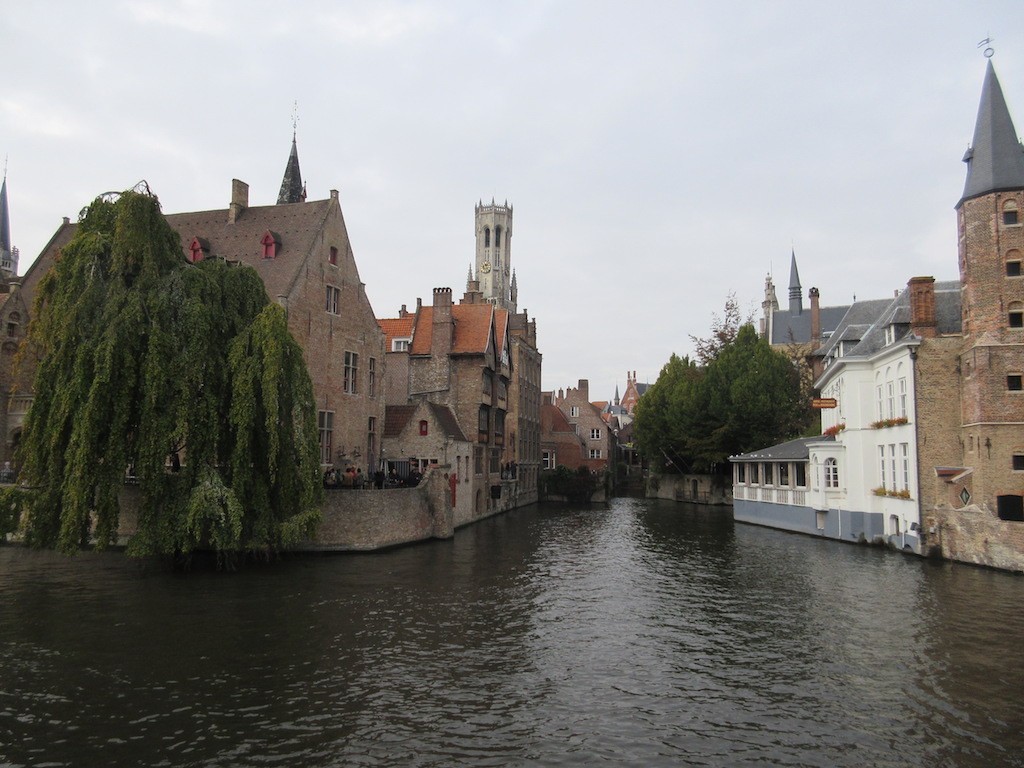Our stop on this day took us to the small town of Bernkastel, known as the International Town of Vines and Wine. This historic city is filled with gorgeous historic gabled timber-frame houses from the 17th Century. Our walking tour took us through the Jewish section of town, several ornate fountains, unique timber-frame houses and lots of bakeries and sweet shops. This is the sweetest little town that we have visited thus far. What it lacks in size it makes up in character and charm.
Kent went to the Jewish cemetery with a Jewish couple from New York city and Rita where there were 33 Gravesites in the cemetery. The Jewish lady found her acquaintance or grandparent’s graves among those buried there. The cemetery is located high above the river and city in the vineyards.
This region is well known for its Riesling grape vineyards and wines. The population of the town is only about 7,000 inhabitants. Our tour took us to a charming wine tasting shop complete with a cellar where we sampled several varieties of the local Riesling wines.
The afternoon was free for us to further explore the town on our own. Kent and I sat in a cute little coffee and pastry shop for coffee, hot chocolate and treats to watch the people go by.
There are remains of an old castle high up in the hill above the city but we chose not to walk up there to explore it today.
After dinner we had a troupe of young Can Can dancing girls direct from Paris to entertain us. They performed a variety of different dances, songs and comedy including some audience participation where several men were called on stage to try out their dance skills. Luckily we escaped the audience participation. The show was very entertaining and I think all of the guests enjoyed the entertainment. We had seen them on our Vantage river boat tour of France last year but we still enjoyed them and their high kicks.




